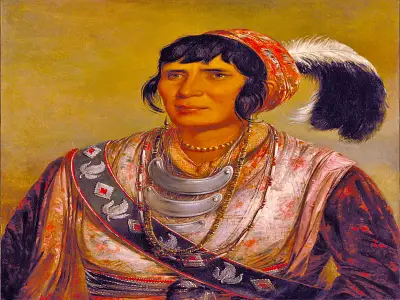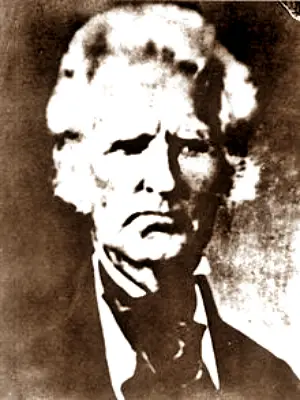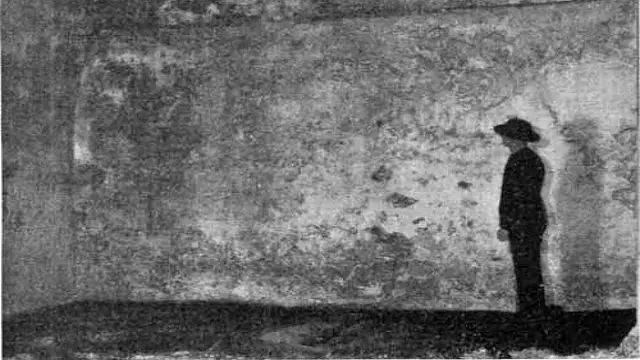Discover the haunting tales of Fort Marion and its tragic past!
The other day, I stumbled upon a ghost-hunting show featuring Fort Marion in St. Augustine, Florida. The episode focused on the tragic stories of two star-crossed lovers from the Spanish era. However, the ghost hunters were also on the lookout for the spirit of Osceola, a prominent Native American leader. They portrayed him as a tragic figure, suggesting he was beheaded at the fort, much like historical figures such as Mary Queen of Scots. But hold on! This claim is misleading. Osceola actually died at Fort Moultrie in South Carolina, not in Florida, and certainly not by beheading. Let’s dive deeper into the real story behind Fort Marion.
In October 1837, Osceola was captured along with several Seminole leaders and warriors, including King Phillip and his son Coacoochee. Among the captives were also Yuchi tribe members, who had fled their homes in the Tennessee River Valley and sought refuge with the Seminole in Florida. Notable Yuchi captives included Yuchi John, Yuchi Bob, and Yuchi Billy. As they traveled to St. Augustine, an army doctor noticed that Osceola was unwell. He had been battling malaria for months and was likely developing tonsillitis, which would eventually lead to his death.

The conditions at Castillo de San Marcos, later renamed Fort Marion, were grim. The quarters were cramped, damp, and unsanitary. The doctor who first attended to Osceola was soon reassigned, leaving the care of the captives to Dr. Frederick Weedon. He visited them twice daily, but the overcrowded environment led to rashes and head lice among the prisoners. In December 1837, a chickenpox outbreak struck, affecting many who had no immunity. Tragically, Yuchi Billy succumbed to the illness, but Osceola managed to avoid it, possibly due to prior exposure.
A disturbing aspect of Dr. Weedon’s character emerged after Yuchi Billy’s death. He amputated the head of the deceased and preserved the skull as a macabre souvenir. When Osceola died in January 1838 at Fort Moultrie, Weedon did the same, removing his head and placing it in alcohol. This gruesome practice has led to misconceptions about Osceola’s death, as both men were beheaded post-mortem by the same doctor, albeit in different locations.
Osceola’s biographer, Patricia Wickman, attempts to justify Weedon’s actions as typical for the 19th century. However, it’s crucial to recognize that the bodies of these two men were not treated according to their cultural beliefs. Native Americans, especially leaders and warriors, deserve respectful treatment after death. Osceola had explicitly requested that his body be returned to Florida for burial, and he prepared for death by donning his finest attire. Despite claiming to sympathize with Osceola, Weedon disregarded his wishes, ultimately leaving Osceola’s remains disrespected and unceremoniously handled.
Legends have emerged around both Fort Marion and Fort Moultrie, suggesting that Osceola’s spirit haunts these locations, seeking revenge on those who disrespected him. Whether or not one believes in ghosts is a personal choice. However, it’s essential to clarify that Osceola did not die at Fort Marion. The Native leader whose remains were mishandled there was Yuchi Billy, not Osceola. If anyone has a right to be aggrieved about the events at Fort Marion, it is Yuchi Billy, not Osceola.
The Legacy of Osceola and Yuchi Billy
Osceola, born Billy Powell, was a key figure in the Second Seminole War. His leadership and resistance against U.S. forces made him a symbol of Native American resilience. He fought fiercely to protect his people’s land and way of life. His capture and subsequent death marked a significant moment in history, highlighting the struggles faced by Native Americans during this tumultuous period.
Yuchi Billy, on the other hand, represents the often-overlooked stories of other tribes that allied with the Seminole. The Yuchi people, displaced from their homeland, sought refuge and played a vital role in the resistance against U.S. expansion. Their contributions and sacrifices deserve recognition and respect.

The stories of Osceola and Yuchi Billy remind us of the complex history of Native Americans in the United States. While ghost stories can be entertaining, it’s crucial to separate fact from fiction. The real tragedies of these leaders’ lives and deaths deserve to be honored with accuracy and respect.
As we explore the haunted tales of Fort Marion, let’s remember the true history behind the legends. Osceola and Yuchi Billy’s legacies continue to resonate, reminding us of the importance of understanding and respecting the past. By acknowledging their stories, we can foster a deeper appreciation for the rich cultural heritage of Native Americans and the struggles they faced.
Understanding the Historical Context
To fully grasp the significance of Osceola and Yuchi Billy, we must consider the historical context of their lives. The Second Seminole War (1835-1842) was a pivotal conflict between the United States and the Seminole tribe in Florida. The U.S. government sought to remove Native Americans from their lands, leading to fierce resistance from the Seminole people. Osceola emerged as a charismatic leader during this time, rallying his people against the encroaching forces.
Osceola’s capture in 1837 was a turning point in the war. He was lured into a trap under a flag of truce, which many viewed as a betrayal. His imprisonment and subsequent death symbolized the broader struggle of Native Americans against U.S. expansionism. The treatment of his body after death further exemplified the disrespect shown to Native cultures during this era.
The Role of Fort Marion in History
Fort Marion, originally built as Castillo de San Marcos in the late 17th century, served various purposes throughout its history. It was a military stronghold, a prison for Native American leaders, and a site of significant historical events. The fort’s transformation into a symbol of oppression for the Seminole people is a stark reminder of the injustices they faced.
Today, Fort Marion stands as a historical site where visitors can learn about the complex narratives of Native American history. It serves as a place of reflection, allowing us to confront the past and understand the impact of colonization on indigenous communities.
Preserving Native American Heritage
As we delve into the stories of Osceola and Yuchi Billy, it’s essential to recognize the ongoing efforts to preserve Native American heritage. Many tribes are working tirelessly to reclaim their histories, languages, and cultural practices. Education plays a crucial role in this process, as it helps to dispel myths and promote understanding.
By supporting Native American initiatives, we can contribute to the preservation of their rich cultural legacies. This includes advocating for accurate representations in media, supporting indigenous artists and storytellers, and promoting educational programs that highlight Native American history.
The Importance of Respectful Remembrance
When discussing figures like Osceola and Yuchi Billy, it’s vital to approach their stories with respect and sensitivity. These leaders were not just historical figures; they were individuals with families, cultures, and beliefs. Their legacies should be honored in a way that reflects their significance and the struggles they endured.
As we share their stories, let’s ensure that we do so with accuracy and empathy. This means acknowledging the complexities of their lives and the broader historical context in which they existed. By doing so, we can foster a more inclusive understanding of American history that honors the contributions of all its peoples.
In conclusion, the tales of Osceola and Yuchi Billy serve as powerful reminders of the resilience of Native American communities. As we explore the haunted legends of Fort Marion, let’s commit to honoring their memories with truth and respect.
We can take action by educating ourselves and others about Native American history, supporting indigenous rights, and advocating for the respectful treatment of their stories. By doing so, we contribute to a more just and equitable society that recognizes the importance of all voices in our shared history.
Let’s keep the spirit of Osceola and Yuchi Billy alive, not just as ghostly figures in folklore, but as symbols of strength, resistance, and the enduring legacy of Native American culture. Together, we can ensure that their stories are told with the dignity they deserve, paving the way for a future that honors the past.

